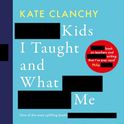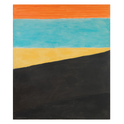I’m neither too modest nor too proud to admit that I’ve just achieved a lifetime ambition. Or, if you want to be specific about it, it’s an ambition I’ve held since I was 18 years old. That’s when I picked up a copy of Sight & Sound, the British Film Institute’s venerable monthly magazine, for the first time.
This wasn’t a publication that was normally stocked by my local newsagents in a North Wales seaside town, but I guess they’d made an exception for this particular issue—because it was quite a special one. Inside were the results of two polls, one of critics and one of directors, that S&S has been running once a decade since 1952 (or 1992 in the case of the directors’ poll) to identify the greatest films of all time.
Citizen Kane came top in that issue, in 2002, as it had done in every poll since 1962. But teenage me had seen Citizen Kane already, so I wasn’t too fussed about that. What really interested me were the films further down the list, those that I hadn’t seen and—in some cases—hadn’t even heard of: Mizoguchi’s The Story of the Last Chrysanthemums; Hou’s A City of Sadness; Rocha’s Black God, White Devil, and more. An ambition was kindled that day, to watch them all.
But another—less healthy—ambition arose at the same time. At some point, I thought to myself, I’d love to be one of the critics asked to submit a top ten for S&S’s decennial poll. And it’s this ambition that I recently fulfilled, as I was indeed asked for the 2022 edition of the poll, the results of which were published at the end of last week. The voracious, aspirational 18-year-old me would be proud… not that I much care what that jerk thinks.
As it turned out, this was a terrific year—decade?—to be asked to contribute. S&S, under the fairly new editorship of Mike Williams, has been doing a lot to expand and diversify the roll call of critics and directors who are balloted, after the previous editor, Nick James, did a similar job back in 2012. This year, 1,639 critics and 480 directors from around the world were polled—94 and 34 per cent more than before—and the results are reflective of this open-armed approach. Citizen Kane didn’t come top, nor indeed did 2012’s winner, Vertigo. The greatest film of all time, according to the Sight & Sound critics poll of 2022, is Chantal Akerman’s three-and-a-half-hour feminist masterpiece Jeanne Dielman, 23, quai du Commerce, 1080 Bruxelles.
Is it a worthy winner? Absolutely—Jeanne Dielman is one of the heights of cinematic art. Is it the greatest film of all time? Probably not—just as Vertigo, Citizen Kane, and 1952’s top film, The Bicycle Thieves, probably weren’t either. It ought to be stating the obvious that these sorts of lists are an imperfect science, but—judging by the way some people have responded to this one, or at least certain parts of it, online—maybe it’s not so obvious, after all.
In fact, my own ballot—which you can see at the end of this post—was pretty darn imperfect. And it became more imperfect the more I tried to perfect it. You might think that, with my having held this ambition for 20 years, I would have had a top ten list all ready and waiting to go. But if I did, it certainly didn’t survive the moment in the summer when I was first asked to participate. Suddenly, all my senses were scrambled by (what seemed to me to be) the immense responsibility of the situation. Sight & Sound’s greatest films poll could well be the most respected in the world, and each one has a shelf-life of ten years—or longer. I couldn’t just rush into this.
The obvious first step was to distinguish between “favourite” and “greatest”—the former aren’t always the latter—so out went Alien and its pesky xenomorph. Then I started worrying about another type of favouritism, the type I show towards my favourite filmmakers, including the ones whom I do actually regard as the greatest. So in came a rule: only one film per director, so my top ten wasn’t just a list of ten John Ford movies. But then I really couldn’t pin it down to just one film by the directorial duo of Michael Powell and Emeric Pressburger, so I decided to allow them two (The Life and Death of Colonel Blimp and Black Narcissus) in my final selection, with the excuse that it was one film for each of them.
There were further complications. I included what I regard as one of the most underrated films of the Hollywood studio system, a film I like to evangelise about, Raoul Walsh’s The Roaring Twenties, even though—whisper it—I probably don’t think it’s one of the ten greatest of all time
And when I reached what I thought was my actual ten, I realised that it contained no films from the current millennium, so, rather than risk coming across as a particularly unreconstructed type of filmgoer, I hastily chose between Nuri Bilge Ceylan’s Once Upon a Time in Anatolia (2011) and Alexander Sokurov’s Russian Ark (2002)—the Sokurov came out on top—and kicked out Akira Kurosawa’s Stray Dog (1949).
In the end, as much as I’d thought seriously about the list—rewatching dozens of films to find out whether they truly were as I’d remembered them—it all began to feel quite random. Hundreds of others, including Stray Dog and Track of the Cat and Singin’ in the Rain and, yes, Jeanne Dielman, could have been among my ten. The reasons they weren’t included: some gross contrivances on my part; my mood on the day; and, in the case of the wider body of cinema, the fact that I haven’t seen even a fraction of everything. Naturally, there are vast gaps in my knowledge—and peculiarities in my taste.
I can’t speak for all the other critics polled, but I’d be surprised if my process—or something like it—wasn’t typical. These polls are, like I said, an imperfect science. Everyone has their own contrivances, whims and gaps.
This isn’t a weakness of Sight & Sound’s poll so much as it’s a feature. I loved that first list I encountered in 2002, just as I’ve loved all the others I’ve encountered since, not because of which films finished where—but because of how they opened up my perspectives on cinema. Think you’re actually getting a comprehensive list of the greatest films of all time? Pah! There’s no such thing. Instead, this is a chance to discover what moves some of the most serious, informed cinephiles in the world. And that is the cultural equivalent of diamonds.
Which brings me on to what many people—at least in the less temperate corners of Film Twitter—are moaning about after the publication of this year’s results. Thankfully, it’s not really the triumph of Jeanne Dielman that’s got them incensed, nor, generally speaking, the improved diversity of the list (there are nine more films directed by women in this year’s top 100, compared to 2012, and six more by black filmmakers). It’s the position of one film in particular: Céline Sciamma’s Portrait of a Lady on Fire, which finished in 30th place. This is total proof, it’s being argued, that critics of the new generation don’t have imaginations that stretch back further than 2019 and into the true greatness of the past. How else, after all, could Portrait beat Céline and Julie Go Boating, Sátántangó, and Rear Window?
In response, I could make some observations about S&S’s balloting methods or, indeed, about Portrait itself. But, really, all I want to say is… whatever, man. Don’t expect perfection—or your idea of it—from these polls. And don’t be surprised if a younger, more diverse electorate delivers results that might, from a certain point of view, be regarded as outliers, but that, from other points of view, are actually films that belong, utterly, with the rest.
And if anyone is really bothered by the state of the overall poll results, there’s always solace and sustenance to be found in critics’ individual top tens. It’s been a joy, these past few days, to see others post their final picks on Twitter. Devika Girish’s has sorted out my viewing for the rest of the month—and, I suspect, much longer than that. Anne Billson’s is both gloriously eclectic and includes Starship Troopers (a movie that is great not because of how it adapts its source material but because of how it argues against it). And Christina Newland chooses what is, of course, the right Scorsese.
Apparently, all the individual top ten ballots will be published on the S&S website in January. In the meantime, the latest issue, the poll special, is out today—so hurry to buy a copy. These things only come around once a decade.
And—who knows?—perhaps an insufferable 18-year-old in North Wales will thumb through a copy and decide to watch all the films, including Portrait of a Lady on Fire. If so, they’ve got a wonderful education ahead of them. And the best part is—I can reveal as a similarly insufferable 38-year-old—it will never, ever stop.













